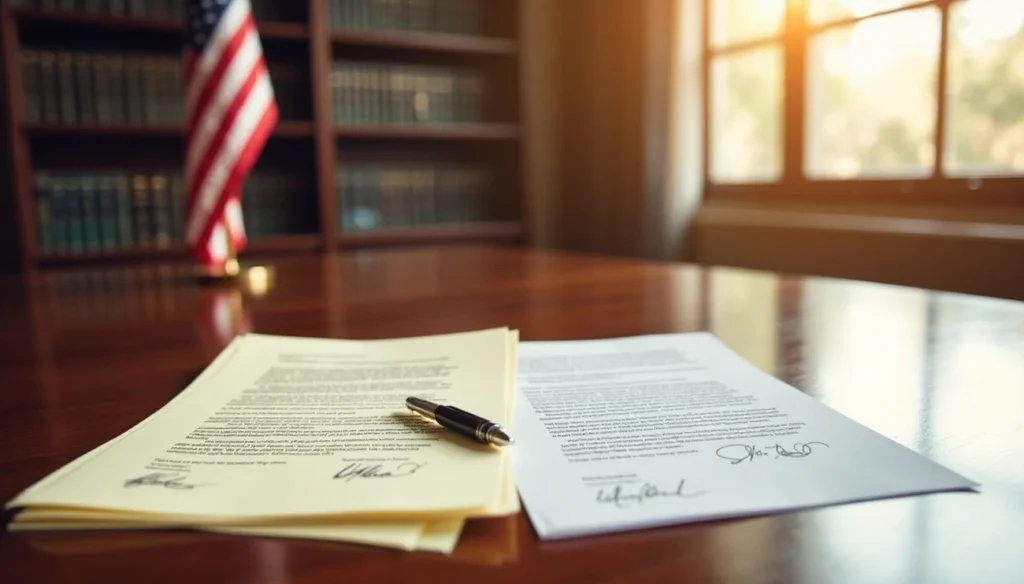An O1 visa recommendation letter can determine the fate of your application as someone with extraordinary abilities. The O-1 nonimmigrant visa welcomes people who show exceptional talent in sciences, arts, education, business, athletics, or those with outstanding achievements in motion picture or television.
Getting this prestigious visa needs solid proof of your extraordinary ability. Your application should show awards, publications, and important work records. You’ll also need two different types of written support: recommendation letters and advisory opinion letters. Both play vital roles in your petition, but serve different purposes.
USCIS suggests submitting 3 to 5 recommendation letters. Each letter should highlight your unique contributions to your field. The “peer group” advisory opinion validates your qualifications from recognized experts or organizations.
Many people find it hard to tell these two types of letters apart. They struggle to understand their differences and how to use them effectively in their application. This piece will explain the specific purposes, requirements, and best ways to handle both O-1 visa recommendation letters and advisory opinion letters. You’ll learn to direct this complex process with confidence.
Understanding the Role of Letters in the O-1 Visa Process
The O-1 visa represents one of the most prestigious ways talented professionals can work legally in the United States. Your recommendation letters play a vital role that could mean the difference between getting approved or denied.
What is an O-1 visa and who qualifies?
The O-1 nonimmigrant visa welcomes people who show extraordinary ability in sciences, arts, education, business, athletics, or those with remarkable achievements in motion picture or television industries. This visa comes in two main types:
- O-1A: Made for people with extraordinary ability in sciences, education, business, or athletics. You must show you belong to “the small percentage who have risen to the very top of their field”.
- O-1B: Created for artists and entertainment professionals, where “extraordinary ability” means “distinction” in the arts—achievement levels well above what most people reach.
Unlike the H-1B visa, the O-1 has no yearly limit, which makes it a great option if you qualify. The visa celebrates exceptional talent in many fields, but you need solid proof to show you’re extraordinary.
Why letters matter in the application
Letters help verify your claims to USCIS officers who might not know your field well. These documents serve as third-party endorsements that back up your extraordinary abilities.
Your recommendation letters do much more than check a box—they provide real evidence that can:
- Make complex technical achievements clear to immigration officers
- Show what “extraordinary” means in your field
- Prove your U.S. role matches your unique skills
- Fill any gaps in your documentation
Well-written letters help USCIS officers understand why your work matters.
Overview of recommendation and advisory letters
You need two types of letters for the O-1 visa process:
Recommendation Letters (also called support letters) should show:
- Original work where you led the way
- Recognition worldwide for exceptional achievements
- Work that changed how people think in your field
- New areas of study you developed
These letters usually come from past employers, colleagues, clients, or experts who know your abilities firsthand.
Advisory Opinion Letters (also called consultation letters) are:
- Required by law for most O-1 petitions
- Expert reviews from peer groups, labor organizations, or management groups in your field
- Independent proof that you meet O-1 standards
If you’re applying based on achievements in motion picture or television, you need letters from both a labor union and a management organization in your field.
USCIS will look at other evidence with Form I-129 if no peer group exists. You might not need a new advisory letter if you entered the U.S. in the last two years with one and want to do similar work.
Both letter types work together to paint a complete picture of your extraordinary abilities and provide context that other documents can’t show.
O-1 Recommendation Letters Explained
Recommendation letters are the life-blood of a successful O-1 visa petition. They provide vital third-party validation of your extraordinary abilities. These documents go beyond standard references and serve as expert testimonials that prove your exceptional talents.
Purpose and effect on the application
O-1 visa recommendation letters fulfill two vital roles. They showcase your capabilities through expert viewpoints in your field. They also help USCIS officers understand what your achievements mean, especially when they might not know much about your industry.
These letters create a framework that supports your petition by showing how you meet USCIS requirements. They prove your original contributions, international recognition, and work that changed traditional views in your field.
Who should write them and why it matters
Your recommenders’ credibility shapes how USCIS views your application. The best recommendation letters should come from 6-8 distinguished people who can speak with authority about what you do.
These experts typically include:
- Past employers and supervisors who watched you work
- Respected colleagues in your peer group
- Industry experts known nationally or internationally
- Professors or academic mentors (if applicable)
- Notable clients who benefited from your work
Some recommenders should know you by reputation rather than through direct work. Letters from neutral third parties are particularly valuable because they show recognition beyond your immediate professional circle.
Key elements of a strong recommendation letter
A compelling O-1 recommendation letter needs several vital components. The letter should start by establishing the recommender’s credentials and authority. It must then explain their connection to you and how they know your work.
The main part should detail specific achievements with real examples. Vague praise like “exceptional skills” without proof won’t help. The letter needs to mention publications, awards, or other evidence that backs up claims about your abilities.
Professional presentation adds credibility through proper letterhead and real signatures. The letter should use words like “extraordinary,” “unique,” or “distinguished” along with technical details that explain why your work matters.
Common mistakes to avoid in recommendation letters
Some mistakes can weaken recommendation letters. The biggest problem is being too general – praise without specific examples hurts your case. When multiple letters sound alike, it suggests shallow support instead of real recognition.
Letters shouldn’t focus on what you might do later. USCIS looks at what you’ve already done, not what you might achieve. That’s why phrases like “most promising young scientist” don’t belong in these letters.
Talking about traits like “hard-working” or “competent” can actually hurt your application. These qualities sound ordinary, not extraordinary. Too much technical language can also confuse USCIS officers and defeat the purpose of explaining your unique qualifications.
Advisory Opinion Letters Demystified
The O-1 visa application process needs more than just recommendation letters. You’ll also need an advisory opinion letter – a critical document that proves your extraordinary ability status.
What is an advisory opinion letter?
An advisory opinion letter (also known as a consultation or peer letter) comes from a U.S. peer group or labor organization in your field. This document assesses if you meet the extraordinary ability standards for an O-1 visa. While recommendation letters highlight your achievements, advisory opinions focus on your fit for the offered position and confirm your standing in the field.
Who provides it and when is it needed?
USCIS rules require advisory opinion letters for all O-1 visa petitions. These letters usually come from:
- U.S. peer groups within your field
- Labor organizations with expertise in your industry
- Management organizations relevant to your profession
- Individual experts in your field (if no peer group exists)
You can get an advisory opinion from a field expert if there’s no relevant peer group or labor organization. The expert should clearly state “there is no applicable peer group or labor organization within the field.”
The best people to sign these letters should:
- Know your work well
- Work in your field or a closely related one
- Be recognized experts in your shared field
- Have a history of working in America
- Be independent from your company (not investors or advisors)
How it is different from a recommendation letter
Here’s what sets advisory opinions apart from recommendation letters:
Legal status: Advisory opinions are required by law for most O-1 petitions. Recommendation letters just provide extra support.
Authority: Only designated peer groups or labor organizations can write advisory opinions. Anyone familiar with your work can write recommendation letters.
Purpose: Advisory opinions look at whether you qualify for the O-1 visa category. Recommendation letters describe your achievements and contributions.
Objectivity: Organizations or experts not directly connected to you write advisory opinions, making them more objective.
Advisory opinion letter sample structure
A good advisory opinion letter has:
- An introduction showing the organization’s or expert’s authority
- A statement about no peer group or labor organization (if needed)
- The signatory’s brief bio showing field expertise
- An assessment of your extraordinary abilities
- Clear support for your O-1 visa application
- A summary of your key accomplishments
- Details about how you meet O-1 criteria
These letters should use formal business formatting with proper letterhead and authorized signatures to look legitimate.
Key Differences Between Recommendation and Advisory Letters
The right understanding of O-1 recommendation and advisory opinion letters will make your visa petition stronger. Each type of letter plays its own role, and knowing their differences helps you create a better application.
Legal purpose and USCIS expectations
Advisory opinion letters are required by law for most O-1 visa petitions. These letters came about when unions and authorities worked out the details of this visa category. While recommendation letters are not mandatory, they add great value to prove your extraordinary ability claims.
USCIS asks petitioners to get a ‘peer group’ advisory opinion to review if you meet extraordinary ability standards. This shows that you’re not just saying you’re qualified – you also have backing from respected voices in your industry.
Who writes them and their authority
The letters come from different sources. Advisory opinion letters must come from:
- A labor union in your field
- A peer group with expertise in your area
- A management organization related to your profession
Recommendation letters can come from many more sources. Former employers, colleagues, clients, or known experts can write these letters to speak about your extraordinary abilities.
Some organizations give advisory opinions only to their members. Others might support applications based on notable experience. This shows how advisory opinions are more formal and institutional compared to the personal nature of recommendation letters.
Tone, content, and format differences
Each letter type needs different content:
Advisory opinion letters typically:
- Support your planned U.S. employment
- State they “don’t object” to your visa petition approval
- Come with an official’s signature on organization letterhead
- Give outside review of how you meet O-1 standards
- Look at how well you fit the specific job offer
Recommendation letters should:
- Tell stories about specific projects, contributions, or awards that show your extraordinary ability
- Show how your work stands out from others
- Explain how you’ve moved your field forward
- Include the writer’s background to show they’re qualified to recommend you
Advisory letters are more formal and focus on whether you qualify for the visa. Recommendation letters tell your story and show your achievements and how you’ve shaped your field.
Best Practices for a Strong O-1 Petition
A strong O-1 visa petition needs careful planning, particularly with support documentation. The right combination of letters can make a huge difference in your approval chances.
How many letters to include
USCIS doesn’t require a specific number of recommendation letters for O-1 petitions, despite what many believe. The quality of letters matters more than quantity. Immigration experts suggest three to five powerful recommendation letters as the ideal number for most applications. Extra letters with similar content might reduce their effectiveness since USCIS officers tend to lose interest after reading repetitive testimonials. Note that peer group advisory opinions are mandatory no matter how many recommendation letters you submit.
Tips for choosing the right recommenders
The right recommenders play a significant role in your petition’s success. Great recommenders should have:
- Personal knowledge of your work achievements
- Distinguished education from prestigious institutions
- Notable awards and recognitions in your field
- Experience with prominent clients or organizations
- Strong online presence establishing their credibility
Letters from supervisors or executives carry more weight than those from colleagues or subordinates, so pick recommenders higher up in your professional hierarchy. Yes, it is better if most letters come from experts who know you through your outstanding achievements rather than direct work experience.
Formatting and submission guidelines
Your O-1 petition’s presentation makes a big difference. Letters should be on official letterhead when possible, which adds credibility, especially from well-known organizations. USCIS accepts digitally signed documents, though hand-signed letters work better. Each recommendation letter should address “USCIS” or “To Whom It May Concern”. Brief biographies of recommenders should highlight their expertise and authority to evaluate your qualifications.
Avoiding red flags and USCIS rejections
USCIS rejections often stem from common mistakes. Don’t submit outdated forms or incorrect filing fees. Make sure all required signatures appear in the right places. Use specific examples of your extraordinary abilities instead of vague language. Focus on current achievements rather than “future potential”. Skip personality traits like “hard-working” or “efficient” that suggest ordinary rather than extraordinary abilities. USCIS might reject applications if letters sound too similar in phrasing or format, which suggests they weren’t written independently by the claimed authors.
Bottom Line
Navigating Your O-1 Visa Application Successfully
The difference between recommendation and advisory opinion letters can boost your chances to get an O-1 visa approved. These documents work together to give a full picture of your extraordinary abilities but serve different roles in your petition.
Recommendation letters showcase your achievements through personal testimonials from experts in your field. You need to pick credible recommenders who can give specific examples of your extraordinary abilities. These letters should focus on what you’ve already accomplished rather than your future potential to make your case stronger.
Advisory opinion letters meet a required regulation that confirms your qualifications from an objective viewpoint. A peer group or labor organization must provide a formal assessment to show you meet USCIS’s extraordinary ability standards. Your petition will likely face rejection without this vital document, no matter what other evidence you have.
Both types of letters build a strong O-1 visa petition in their own way. The advisory opinion shows you’re eligible for the visa category, while recommendation letters prove why you qualify with specific achievements.
Note that quality beats quantity when you collect recommendation letters for your O-1 visa application. Three to five detailed testimonials from respected sources work better than many repetitive ones. Getting the right advisory opinion early helps you avoid delays.
Without doubt, putting together the right documents for your O-1 petition needs careful planning. By doing this, you’ll dodge common mistakes and present your extraordinary abilities in the best way. Your careful preparation now leads to approval later, so you can bring your exceptional talents to the United States.
FAQs
Q1. What is the difference between an O-1 visa recommendation letter and an advisory opinion letter?
Recommendation letters are written by individuals familiar with your work to highlight your specific achievements and contributions. Advisory opinion letters are formal assessments from peer groups or labor organizations evaluating whether you meet O-1 visa standards.
Q2. How many recommendation letters should I include in my O-1 visa application?
While there’s no set requirement, including 3-5 strong recommendation letters is generally considered ideal. Quality is more important than quantity, so focus on obtaining detailed letters from credible sources in your field.
Q3. Who should write recommendation letters for an O-1 visa application?
Ideal recommenders include past employers, distinguished colleagues, industry experts with national or international recognition, academic mentors, and notable clients. Some recommenders should know you through your reputation rather than direct collaboration.
Q4. What are the key elements of a strong O-1 visa recommendation letter?
A strong letter should establish the recommender’s credentials, explain their relationship to you, provide specific examples of your achievements, mention publications or awards, and use appropriate “buzzwords” like “extraordinary” or “distinguished” alongside technical details.
Q5. How can I improve my chances of getting recommendation letters from people who don’t know me personally?
Consider reaching out to researchers who have cited your work, editors of journals you’ve published in, or experts you’ve met at conferences. Explain the purpose of the letter and provide a draft to make it easier for them. Focus on those who have meaningfully engaged with your research.



